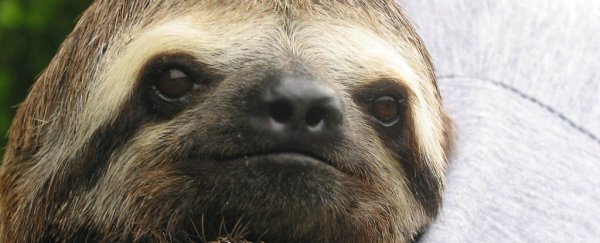

We suspect that wild sloths actually live for much longer than that.Incredibly, if the Lestodons hadn’t ingested and subsequently relieved themselves of the avocado pits as they traveled, it’s very likely the fruit may have gone extinct. The oldest known sloth in the world just turned 50 years old and she lives at a zoo in Germany. All we have to go on is the lifespan in captivity, but sloths do not do well outside of their natural environment. No one knows how long they live forīecause sloths are so difficult to study in the wild, no one has ever followed an individual from birth until death and it is virtually impossible to accurately determine the age of an adult sloth. Scientists have speculated that sloths might eat the algae that grows in their fur, but this is very unlikely and has never been observed. A single sloth can host up to 950 moths and beetles within its fur at once. Some species of fungi living in sloth fur have been found to be active against certain strains of bacteria, cancer and parasites! Sloth hair also provides home to an entire ecosystem of invertebrates - some species of which are found nowhere else on earth (like the ‘sloth moth’). Cracks in their hair allow many different species of algae and fungi to grow which makes them appear green. Sloths have an unusual method of camouflage. When two sloths fight it is typically over access to a female for mating, and the aim of a sloth fight is to knock your opponent out of the tree. They can plummet from over 100 feet without injury (that’s the height of twelve double-decker buses). But don’t worry, all sloths are anatomically designed to fall and survive. On average, a sloth will fall out of a tree once a week for its entire life. Sloths are anatomically designed to fall out of trees. Sloths do not like the cold as they cannot raise their own body temperature metabolically
/https://public-media.si-cdn.com/filer/63/2a/632a72df-033b-4fe1-9c06-b844c547203f/sloth_ascent.jpg)
Instead they are completely reliant on the environmental conditions, and their core temperature can fluctuate over 10☌ during the course of a single day! If they get too cold, the special microbes that live in their stomachs can die, and the sloth can no longer digest the leaves that it eats. Unlike most mammals, sloths have sacrificed the ability to control their body temperature in order to save energy.
SLOTH POOP FULL
They can starve to death on a full stomach In two-fingered sloths, this over-sized stomach is supported by 46 ribs (23 pairs) which is more than any other mammal! Two-fingered sloths have 46 ribs to support their large stomachs – that is more than any other mammal! 7. They have an incredibly large and permanently full four-chambered stomach, which can account for up to 30% of their body mass. Sloths have the lowest metabolic rate of any mammal, which means that it takes them a long time to digest anything. Thankfully, sloths compensate for such poor vision by having a phenomenal sense of smell and a great spatial memory! Their bad eyesight also plays a key role in the sloths slowness - you can’t run around in the trees if you can’t see where you are going!Ħ. As a result all sloths are colour-blind, can only see poorly in dim light and are completely blind in bright daylight. They have a very rare condition called rod monochromacy which means that they completely lack cone cells in their eyes. Scientists still do not understand why sloths risk their lives to poop on the ground. While there are many different theories, the likely explanation is that it’s all about communication and reproduction. This weird weekly routine remains one of the biggest mysteries surrounding sloth behaviour. They will only relieve themselves once a week and can lose up to a third of their body weight in one sitting! Furthermore, they will only do it on the ground after wiggling around the base of a tree to dig a little hole. Sloths are famous for their bizarre bathroom habits. They poop a third of their body weight in one go


 0 kommentar(er)
0 kommentar(er)
